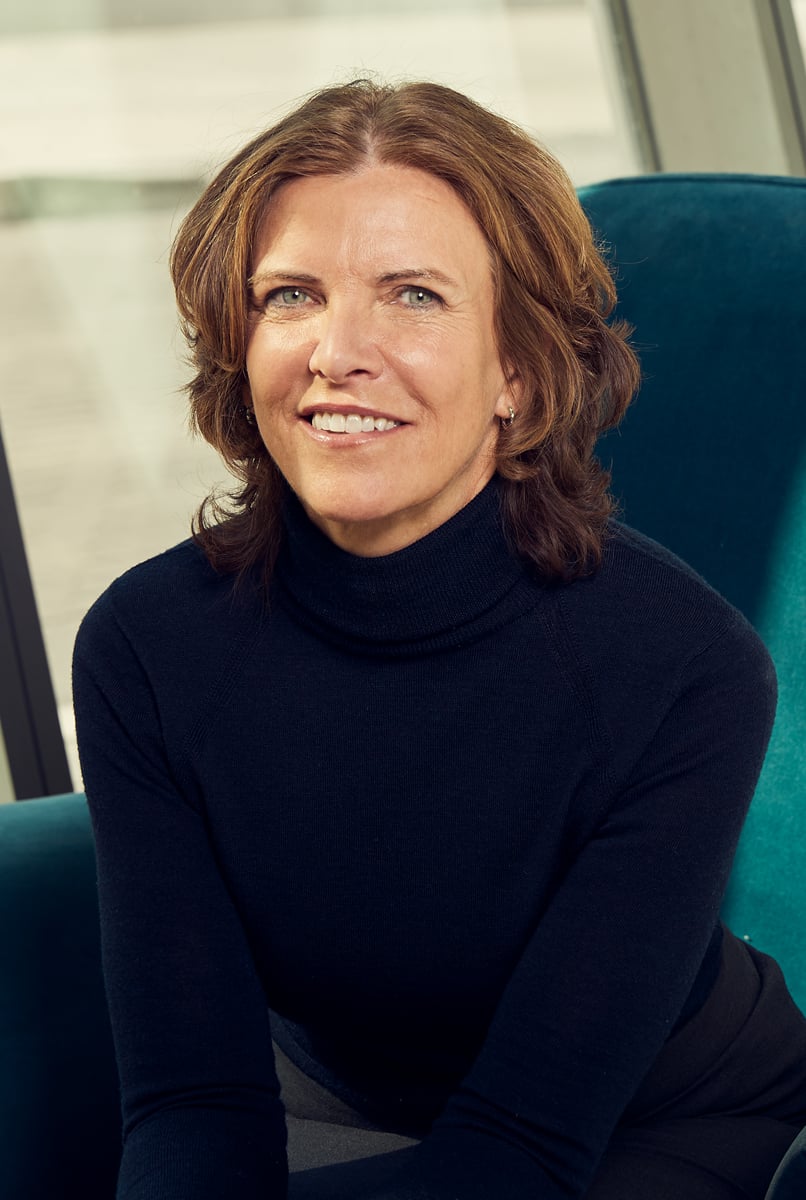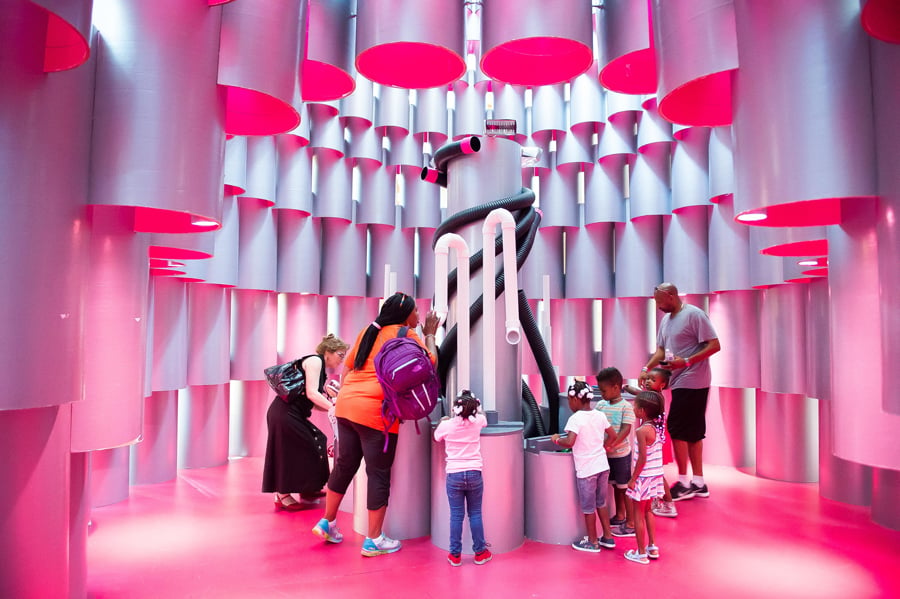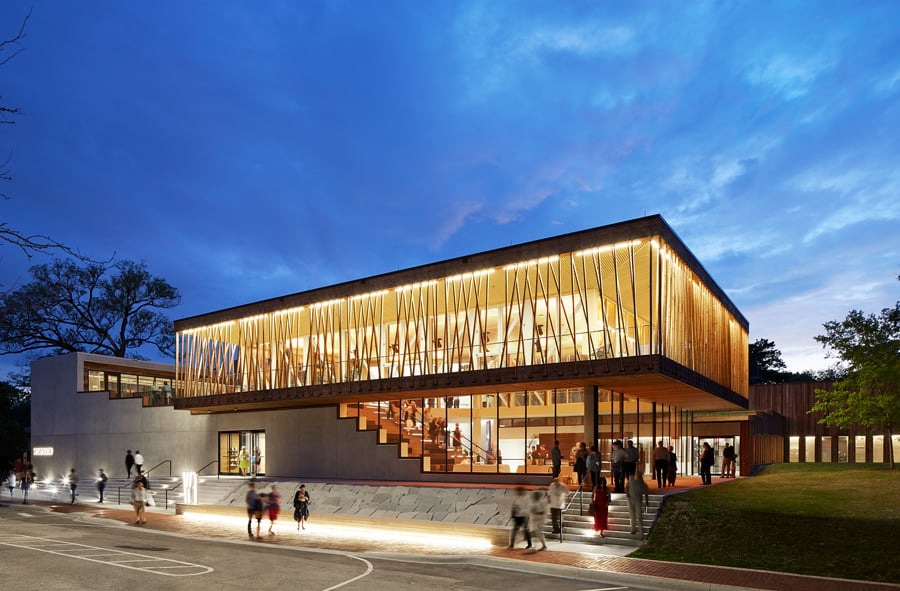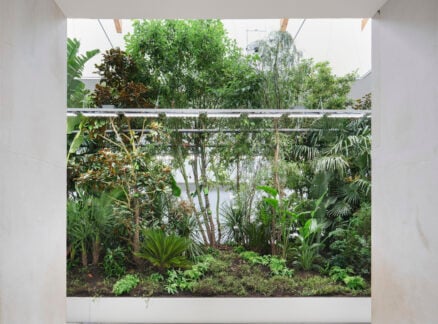
May 20, 2020
Jeanne Gang on “Actionable Idealism” and Architecture that Connects
In this excerpt from Studio Gang’s upcoming Phaidon monograph, the celebrated architect finds “aesthetic and formal affiliations” across 25 projects from the last two decades.

“Actionable idealism” is a phrase I have often used to convey the intention of our studio’s practice. At first glance the term might seem to be an oxymoron, if it’s assumed that pursuing ideals is inherently unrealistic. But together these two words embody the dual challenge at the heart of our work: to articulate the big ideas that move us, and to find a way to methodically pursue and accomplish them using design. Above all, we want to live in a world where humans not only coexist, but also actively support one another as part of our planet’s greater network of living things. This calls on us as designers to practice an architecture that fosters interaction and connection rather than developing stand-alone objects.
To work toward this world in this way takes a relentless kind of optimism, determination, and even courage. It also demands that we engage in a range of architectural pursuits that include, but are not limited to, the design of new buildings. Among our studio’s “extra-building” activities are conceiving and developing self-initiated projects that may have no client; conducting research that is not directly related to buildings; writing essays for the purpose of sharing knowledge; taking positions and rendering opinions in various forums; and running ongoing experiments in the hopes of making specific discoveries and satisfying curiosity. There is also the serious activity of caring for older buildings—restoring or reinventing them—and working to repair and revitalize urban environments in partnership with their communities. Perhaps by understanding this wider context of our pursuits, it is easier to enter into the mindset with which we approach the core activity of Studio Gang: making architecture.
We have been very busy making architecture, in this broad sense, for the past twenty years. But every so often it is important to pause and reflect on the work that has been made and enable it to be seen. This book provides that opportunity. It allows us to take a moment to celebrate, as each building is a triumph in a way, the result of hard work and collaboration with our clients and colleagues. It also gives us a platform to inspire others—to let them know it is possible to accomplish bold, beautiful things with deep ambitions.

Finally, it asks us to consider and articulate the work anew. Though I was initially tempted to make a book like Reveal, my first, which aimed to show the total scope of our creative output and thinking, this monograph offered a framework for a different but equally important task: to gather together our signature, more “traditional” architectural projects (built and yet-to-be built), and through a critical process, organize and explain them in a way that makes our major underlying interests visible. Creating this kind of book not only helps others understand the defining qualities that are present in our work, it also helps us learn more about ourselves. By focusing on buildings, we are able to see and to share the way in which the discoveries from all the other activities of the studio influence and inform what is finally made physical.
Perhaps this task has particular value for Studio Gang because it has often been said that our work resists stylization. It is true that we see each of our projects on its own terms and work to understand their specificities, but there are nevertheless certain aesthetic and formal affiliations between them. Through examining these connections and articulating the intentionality embodied in each project’s design and wider story, it is possible to see more clearly the recurrent themes and distinctive traits that transcend the specific. The twenty-five projects included in this book are organized into six chapters. Importantly, these groupings are not defined by typology or chronology, but rather by conceptual theme—each a particular preoccupation that we explore in different ways and under different circumstances. Editing the project materials down to reflect this essence turned out to be the perfect way to reveal the intellectual pursuits of the studio. The reader can infer how these themes—which I discuss in greater depth at the beginning of each chapter—blossom into more profound questions that occupy us while also seeing how they land in built form as they comingle with program.
While this organization is helpful in understanding the taxonomy of our work, the categories are by no means exclusive. In fact we came to refer to them as “families” to reflect that, though the projects in a particular chapter do share certain key qualities, they also possess unique traits and can equally belong to other chapters. They relate. For example, the bentwood pavilion of Nature Boardwalk at Lincoln Park Zoo, grouped among the Toward Terrestrial projects, could easily find a place in the Rhythm chapter. And the fluid confluence of the Global Terminal at O’Hare International Airport, included with other projects that explore Flow, also exhibits the sheltering, lifted nature of the experiential spaces of Up in the Canopy.
The overlaps between the chapters and their concepts reveal our fundamental interests in nature, material, human experience, building construction, and the creative interplay of art and science. These are the ingredients we use as we pursue an architecture that connects.
Buildings, more than any other product of a creative process, are manifestations of societal values. In order to make them, architects must interact and collaborate with clients, governments, professionals of diverse disciplines, and a variety of stakeholders. Many architectural projects take a minimum of five years to complete, which can seem like an eternity when you love to build. Yet in a mere five years’ time, drastic changes can occur in the world outside the studio—politically, economically, and, now, environmentally. In the past half-decade alone, we have seen major shifts in international power structures; the migration of millions of people; the entrenchment of economic disparity; and exponential, human-caused environmental disruption. In 2015, 2016, 2017, and 2018 the Earth saw the warmest temperatures ever recorded. Looking at the extent of humanity’s self-inflicted wounds, it feels more critical than ever to ask ourselves how architecture can respond. How might we leverage and expand on the creative, collaborative nature of the profession to together shift societal values toward a more balanced and thriving planet? And what will the architecture that we produce through this process be?
These are the questions that drive our practice forward. Our first twenty years of answers are collected in this book.
You may also enjoy “Mabel O. Wilson is Updating the Narrative of American Architecture to Include Black Architects.”
Would you like to comment on this article? Send your thoughts to: [email protected]
Recent Viewpoints
Viewpoints
Sustainability News Updates for Q2 2025



















